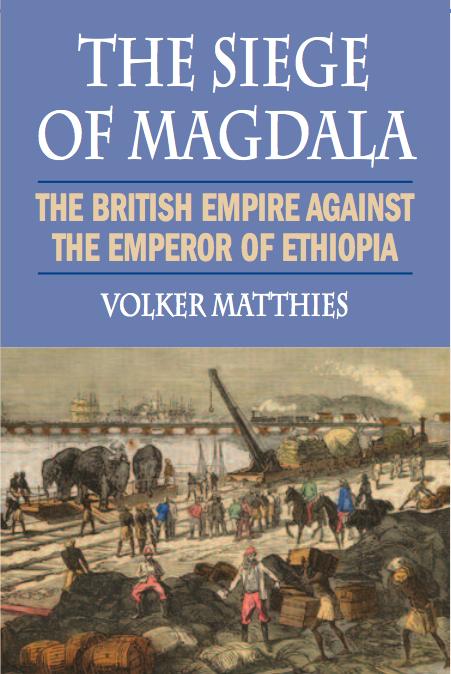|
Reviewed by Dr. Wyndham E. Whynot, Professor of History, Livingstone College A major power’s diplomats and other personnel taken hostage by a developing nation; a series of unsuccessful negotiations, a ruler perceived as being erratic, and a military operation would generally result in many people thinking of Iran’s seizure of the American Embassy in 1978. However, this was not a unique event in world history; in fact, between 1867 and 1868, Ethiopia’s Emperor Tewodros II seized British diplomats and citizens of England and other European nations. Over the ensuing months negotiations failed and England sent in military forces to secure the release of the hostages; unlike the disastrous US military operation, England engaged in a brief and successful war; rescuing the captives. Volker Matthies’ The Siege of Magdala examines this war. Matthies notes that, historically, most texts take a decidedly western view of the operation, yet newer works use a more Ethiopian perspective in their examination of the siege. The author argues the importance of this campaign requires a balanced approach: one that he seeks to develop not only by using the standard works, but by also including information “by the ‘German’ members of the campaign,” that has often been neglected(p. xxiv). Additionally, he discusses the use of embedded journalists, the question over the looting of antiquities, and the role of military force in providing humanitarian intervention. After a brief history of Ethiopia, Matthies provides a relatively straight chronological history of the conflict ranging from the causes of the conflict, the campaign, and the aftermath. Throughout the book the author continually switches from the British to the Ethiopian perspectives. Although obviously a work on a military campaign, the war’s combat operations are covered completely in two chapters. The majority of the chapters focus more on the diplomatic negotiations between various British and Ethiopian authorities, the development of the logistics operations, and the actual march. During Queen Victoria’s reign, Britain found itself in a number of small wars throughout Asia and Africa. These conflicts generally pitted an industrialized England versus the non-industrialized native populations. Arguably the Magdala campaign, one of the earlier small wars, presents a pattern that was often repeated with “modern” British forces attacking less than well armed natives and inflicting massive numbers of casualties. However, as Matthies notes, a major difference in the campaign is that Britain’s intervention was limited to rescuing the hostages and punishing Tewodros II rather than conquering the country and making it a colony. Using a wide range of primary sources including manuscripts, maps, diaries, drawings, pictures, and various accounts of participants in the siege; as well as newspapers from the era, Matthies presents good overview of how the siege was viewed during the late 1860s. Secondary documents from German and English sources provide additional depth to the narrative. Illustrations, maps, and photos from the expedition are liberally sprinkled throughout the text. Additionally, a modern map of the region is included in the introduction. Most chapters include vignettes on a variety of topics such as biographies of participants, money, specific documents from the war, and about the campaign. Except for a few typos, this reviewer believes the chapter on looting Ethiopian treasures is somewhat out of place within the structure of the text. After giving a brief account of the looting, much of this chapter focuses more on the current state of the stolen goods and the occasional return of to the material. Additionally, Matthies discusses the role of the Association for the Return of the Magdala Ethiopian Treasures, as well as the need to find the missing treasures. Although an important issue, this chapter might be better suited as an appendix or the last chapter rather than being in the narrative of the campaign. Individuals interested in studying British military campaigns during the Victorian Age, in Africa or involving Ethiopia, will find this book very useful. Well written and a relatively easy read, most people could easily finish it in one day, yet the elements of the campaign and story presented provide a wealth of information about both the campaign and the various sources available to other researchers interested in this topic. Although one probably would not use this as the main book for a course, it could be useful for students, from high school through various levels of college, as a supplemental text. This reviewer would highly recommend this book. |


 The Siege of Magdala: The British Empire Against the Emperor of Ethiopia
The Siege of Magdala: The British Empire Against the Emperor of Ethiopia